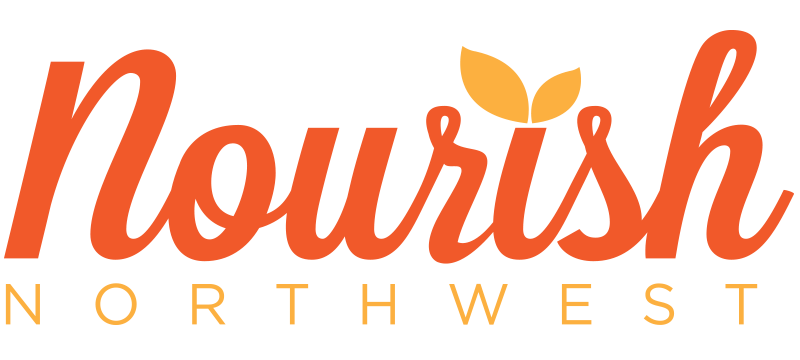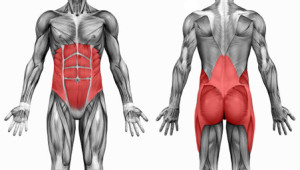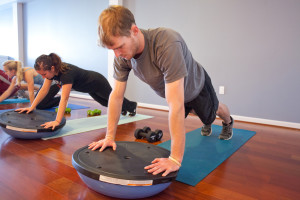Core Training 101
Post by Christy Johnson, Nourish Northwest Personal Trainer and Group Fitness Instructor
 When I say core – you say ABS! Core! ABS! Core! WRONG!
When I say core – you say ABS! Core! ABS! Core! WRONG!
Guess what people!?! Your core does not equal your abs. However, your abs ARE a part of your core, so you are kinda almost there. Today’s post will focus on what your core actually is and what it does. Don’t feel bad if you didn’t know any of this before – mainstream media and the internet seem to only ever tell you that your core involves the front of your stomach and doing 10,000 crunches a day. It’s hard to get to real information about core training unless you know what you are looking for.
As pointed out above, your core is not only your abdominal muscles. Your core can be defined as every muscle in your body that attaches to your spine and/or your pelvis. If you are not up to date on your anatomy that means roughly 40-50 different muscles are involved, and some would argue more than that. So for all you workoutaholics trying to get that 6-pack…bad news…you actually need a 40 pack if you want a strong core!
Your core is involved in almost EVERY daily movement that you do whether you are aware of it or not. It’s primary role is to protect the spine by creating spinal stability, as well as resist any unwanted spinal movements. Example: You bend over to pick something up off the ground and “throw out your back.” You just experience an unwanted spinal movement and now have an injury. Your core musculature failed to maintain stability and protect your spine.
The core’s other job is to help transfer and produce force during dynamic movements, all while maintaining core stability. Example: You are running or lifting weights. The force of your foot hitting the ground, or the force of the weight you press overhead travel through your entire body and…TA-DAH your are propelled forward or the weight gets overhead and your spine doesn’t fall over like a bunch of jenga blocks. Your core did its job by helping you achieve movement and all while maintaining stability!
If you read this far you should see a common thread emerging. Core stability. That is what the core needs to be able to do. That is its primary job. Unfortunately, most “core” exercises people perform do not train core stability, but train the core as a primary mover. Example: Crunches. Crunches will train your rectus abdominis to get really good at those small “up/down” contractions in that one plane of motion. Crunches will not help you achieve core stability. They might give you a good ab burn, but that is about all.
In order to train core stability and really have a strong/functional core that will do its job, you have to engage more than just the front of your stomach. You need to engage the deeper abdominal muscles, the pelvic floor, the glutes, the lats, the rhomboids, the erector spinae, the psoas, the list goes on and on! All these muscles need to learn how to fire and work together through different planes of movement with various forces applied. Only then will your core be ready to dominate whatever you choose to put it through! Bonus: No more throwing out your back when you are trying to pick your pants up off the ground! (True story)
If you want to learn MORE about the core and all about HOW to properly train it come check out our Core Training 101 workshop this weekend! You’ll get a whole hour of core talk and core exercise practice, as well as a list of exercises to continue your practice at home!
When: Sunday April 17th 1:00-2:15pm at Nourish Northwest!
Cost: $25
Sign-up online in advance. Spaces are limited!
http://nourishnorthwest.com/fitness-yoga-classes/fitness-class-schedule-pricing/



